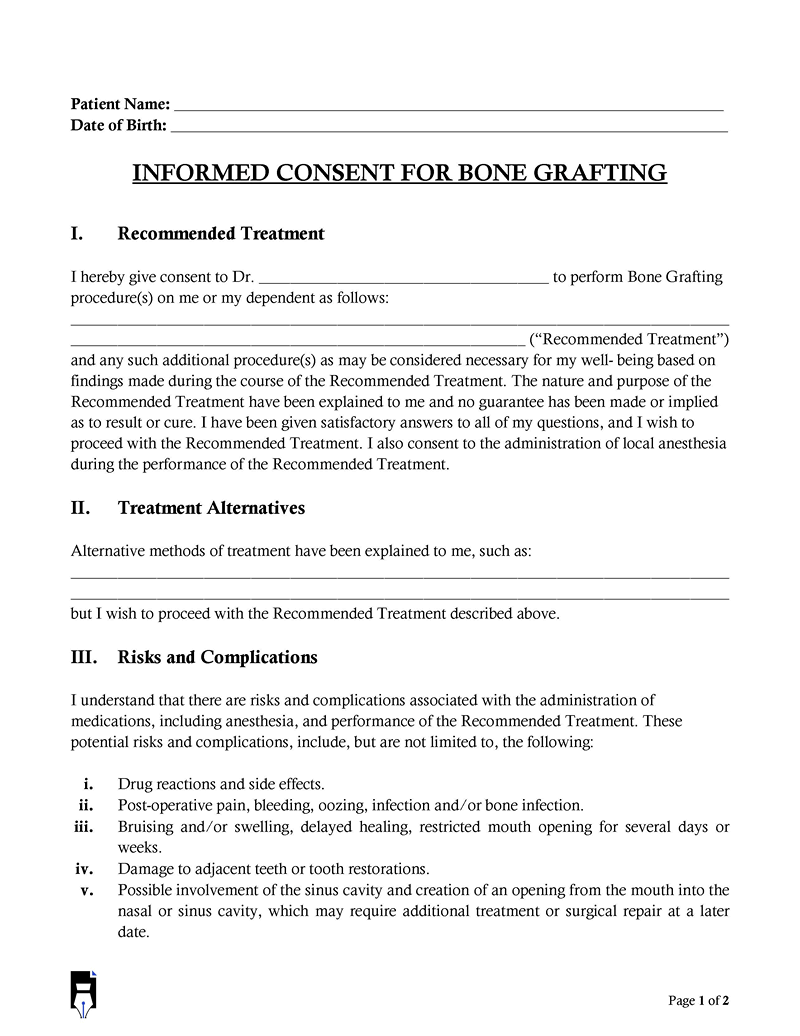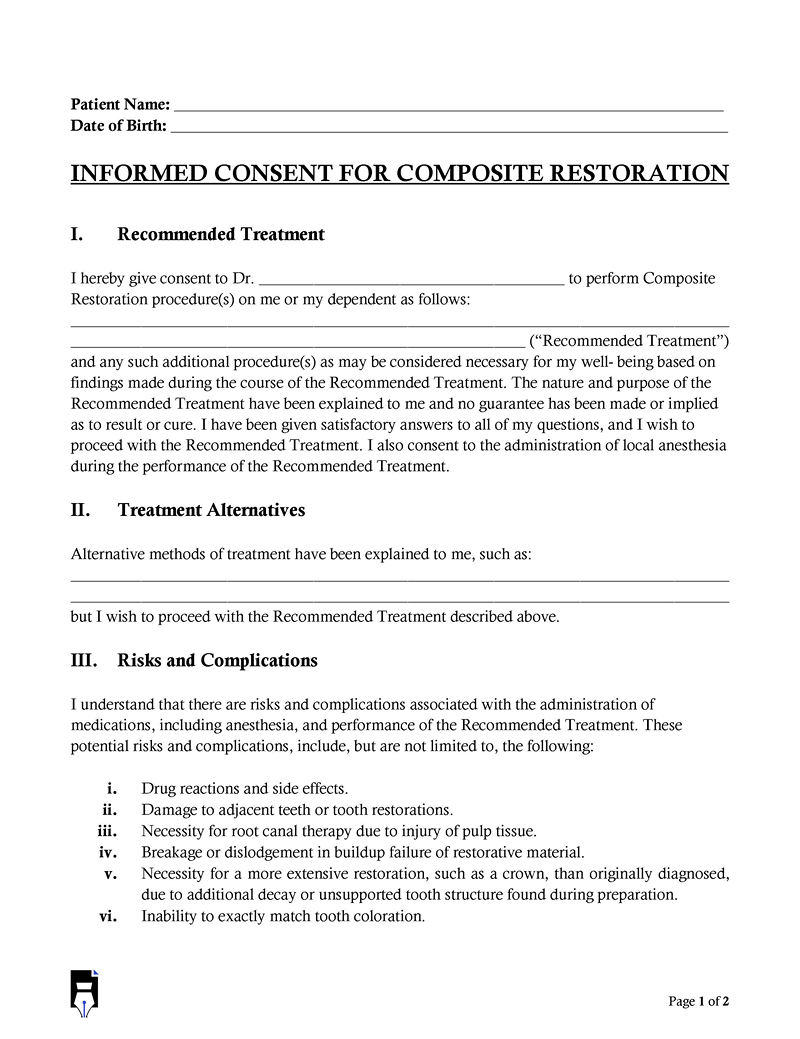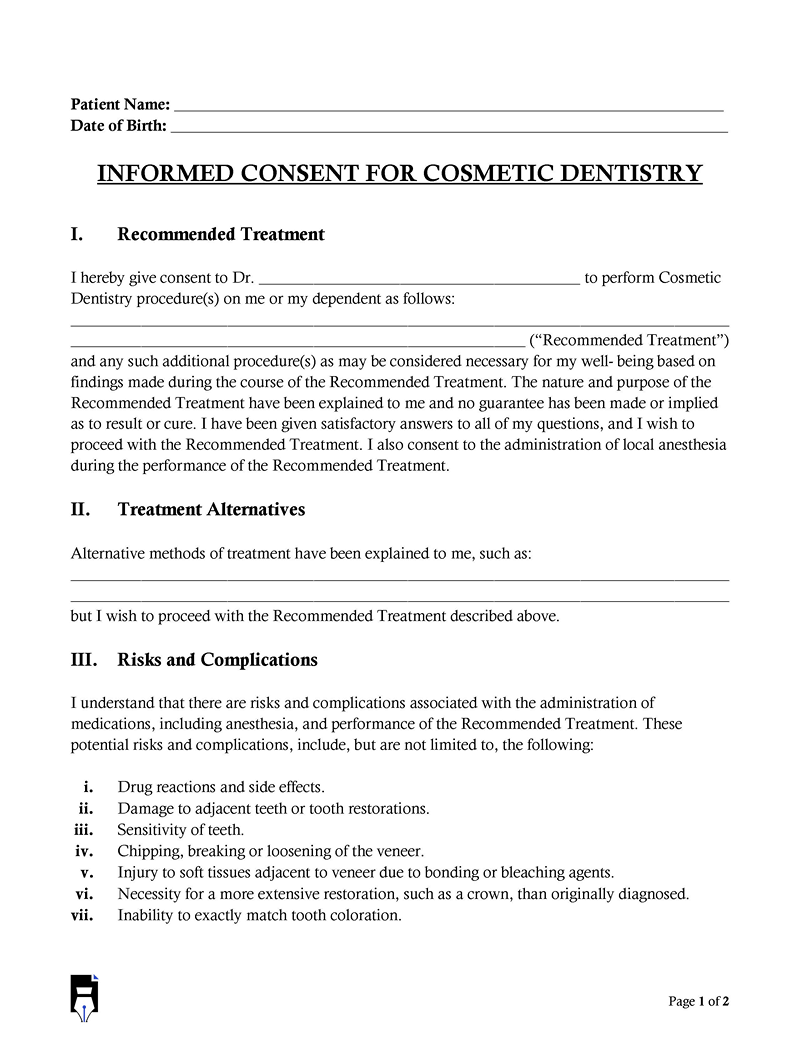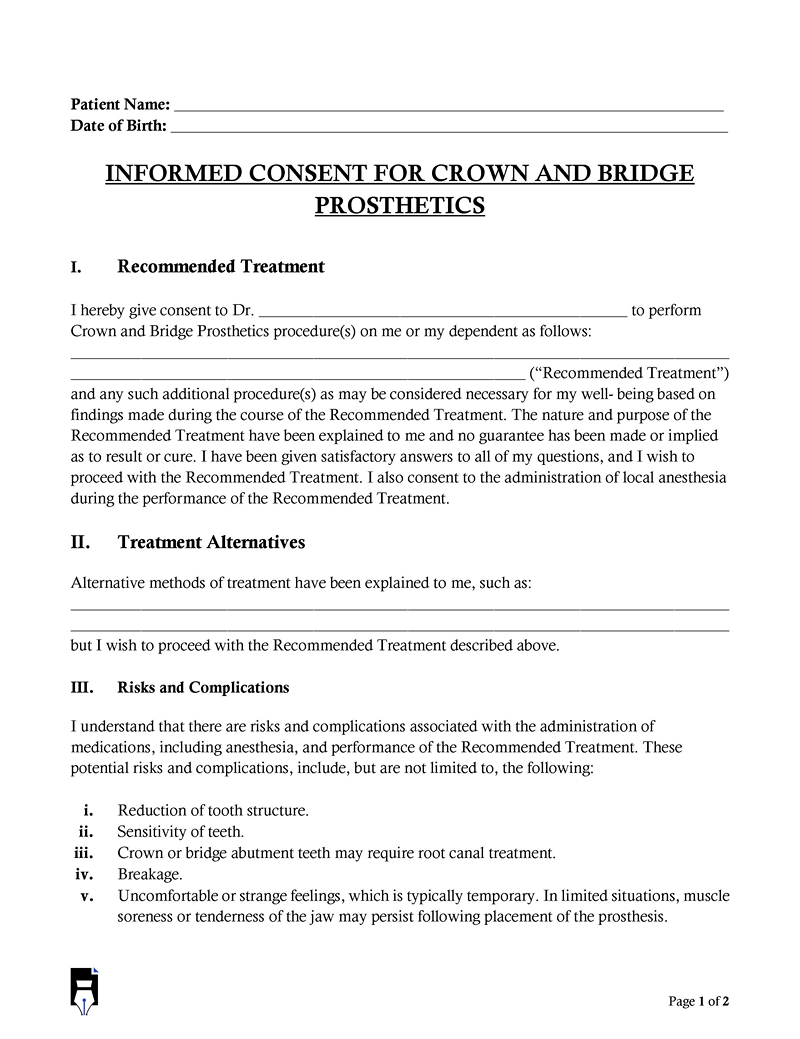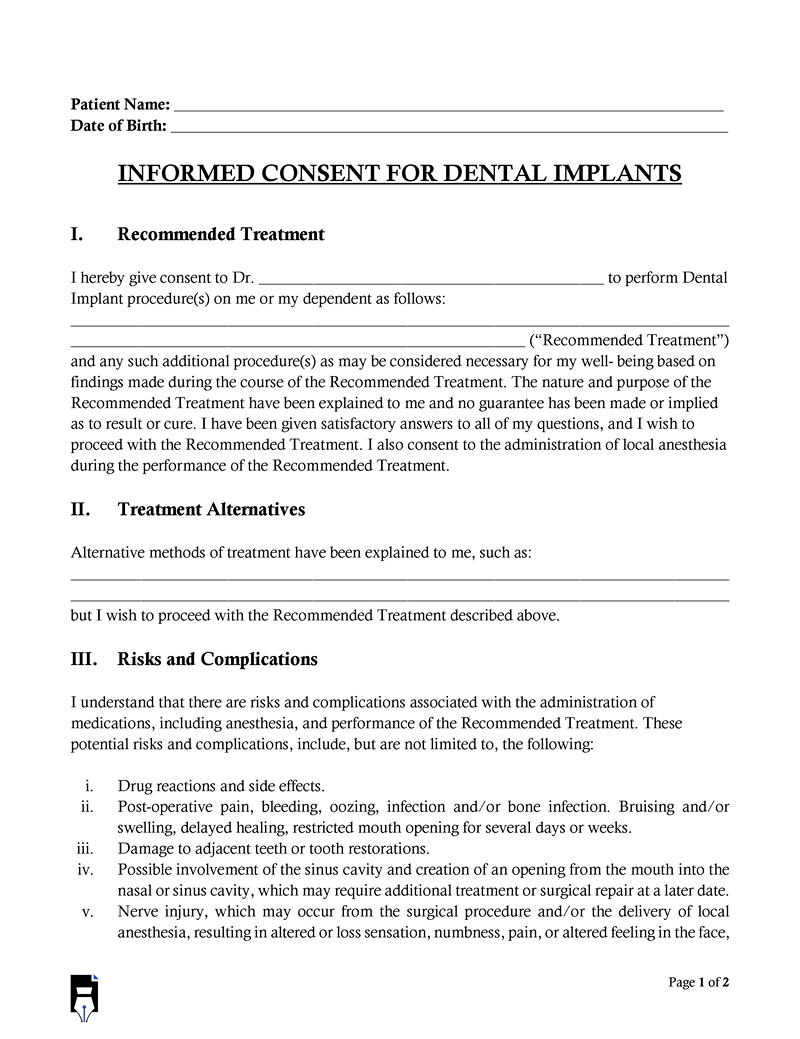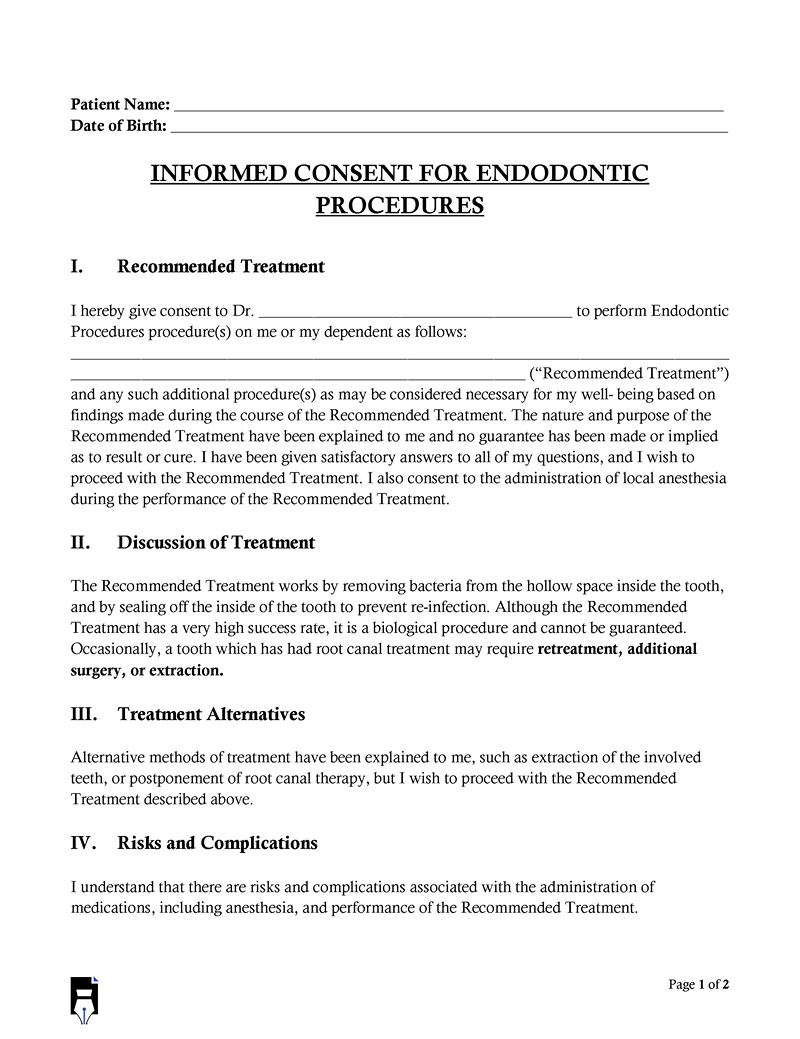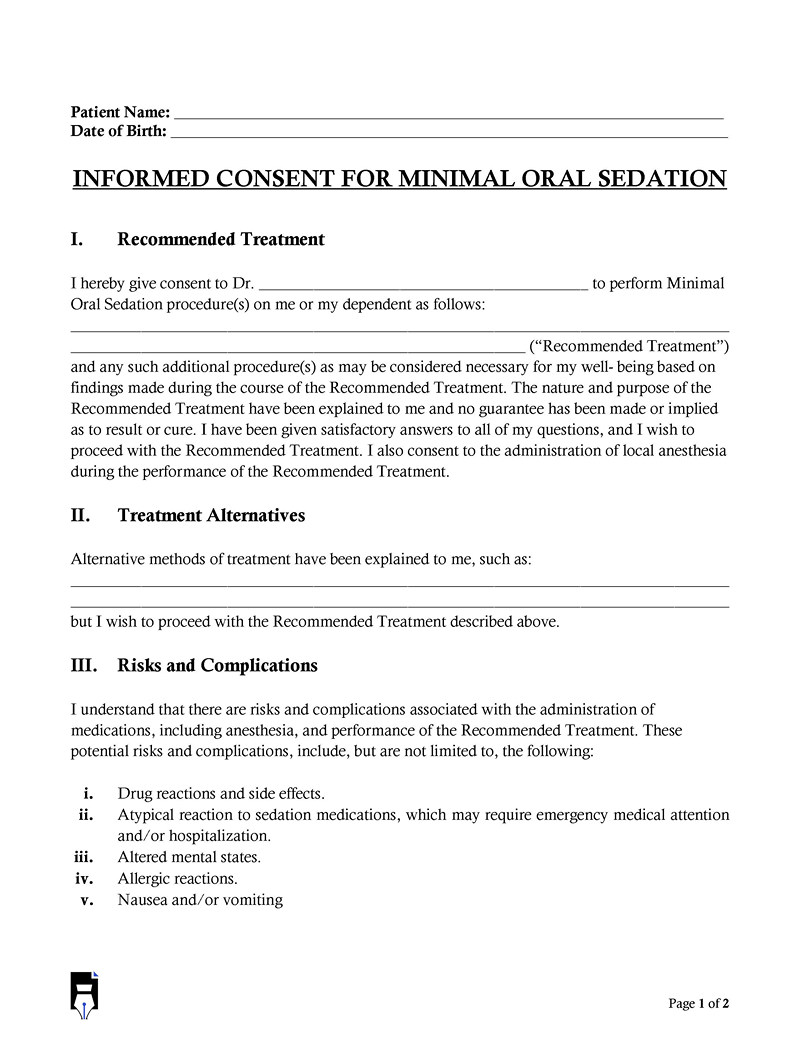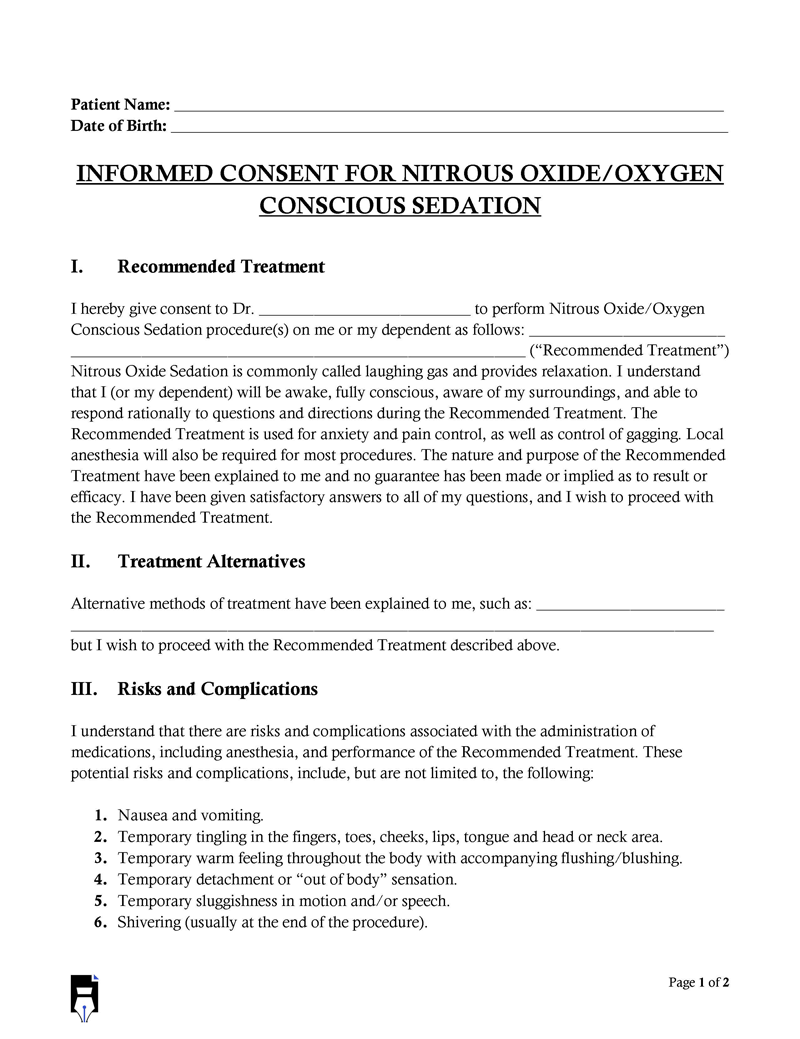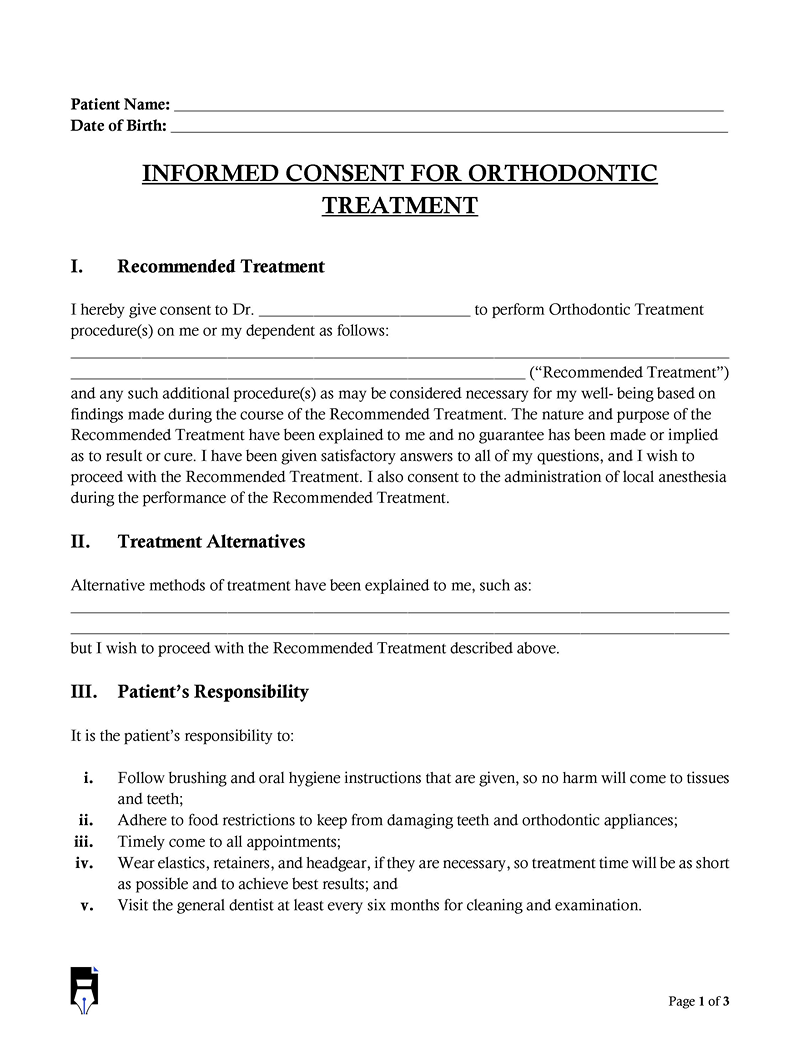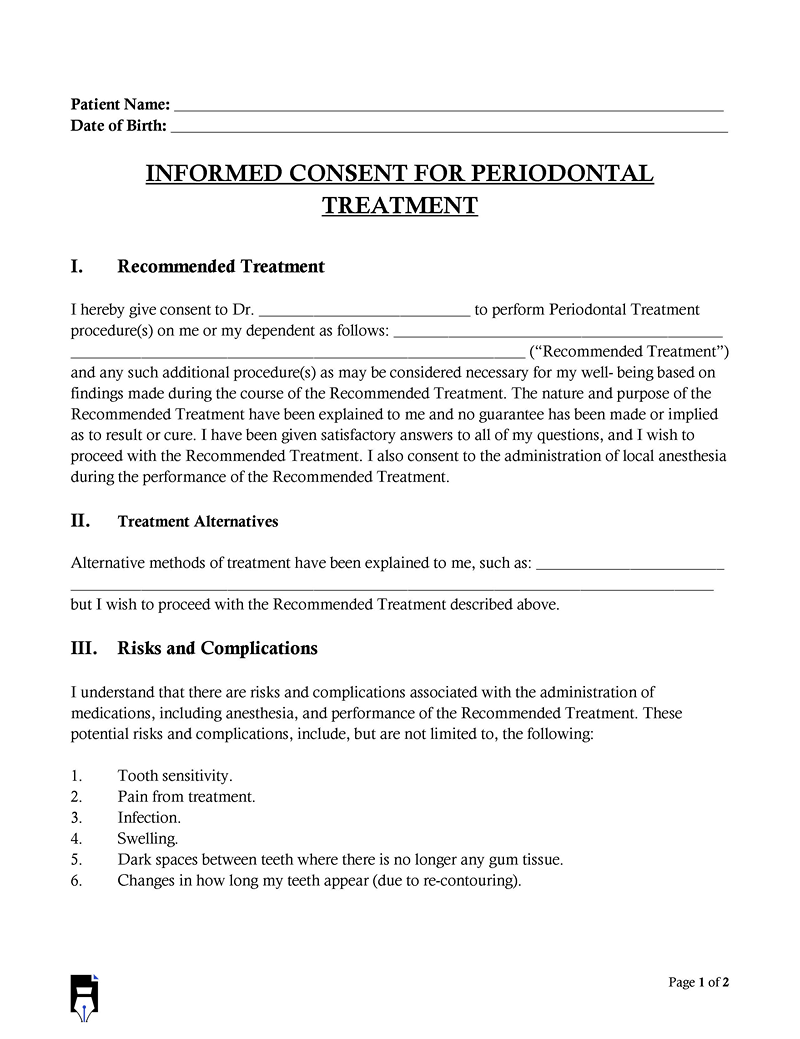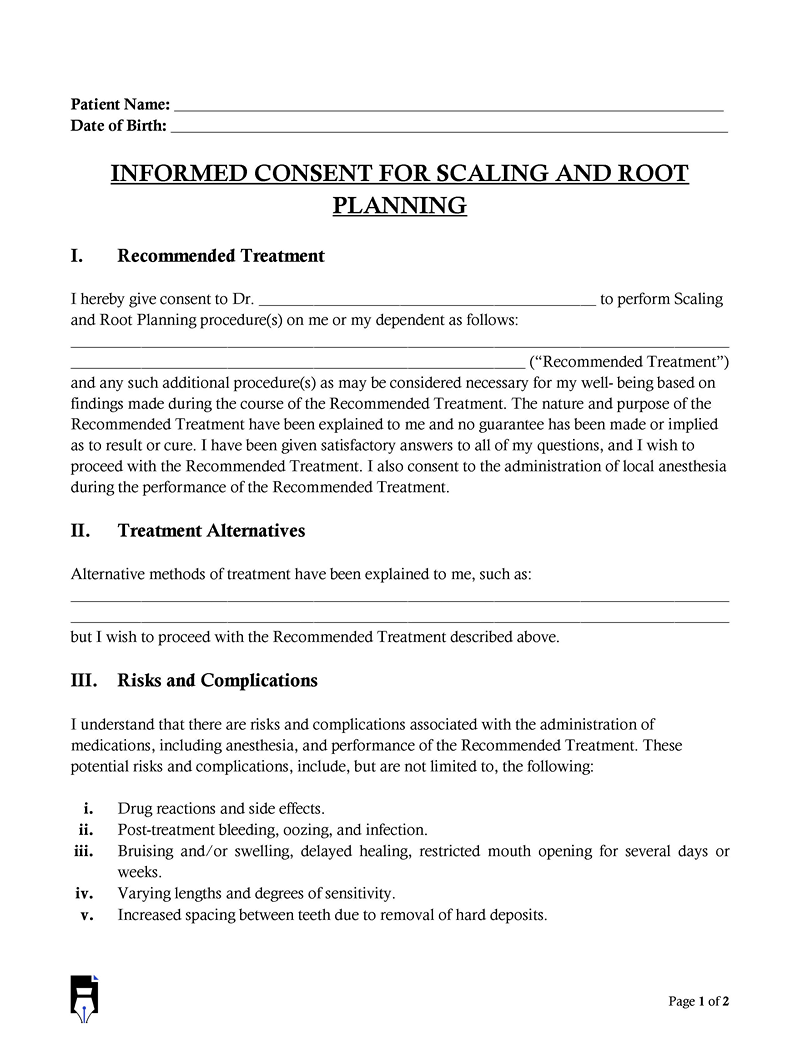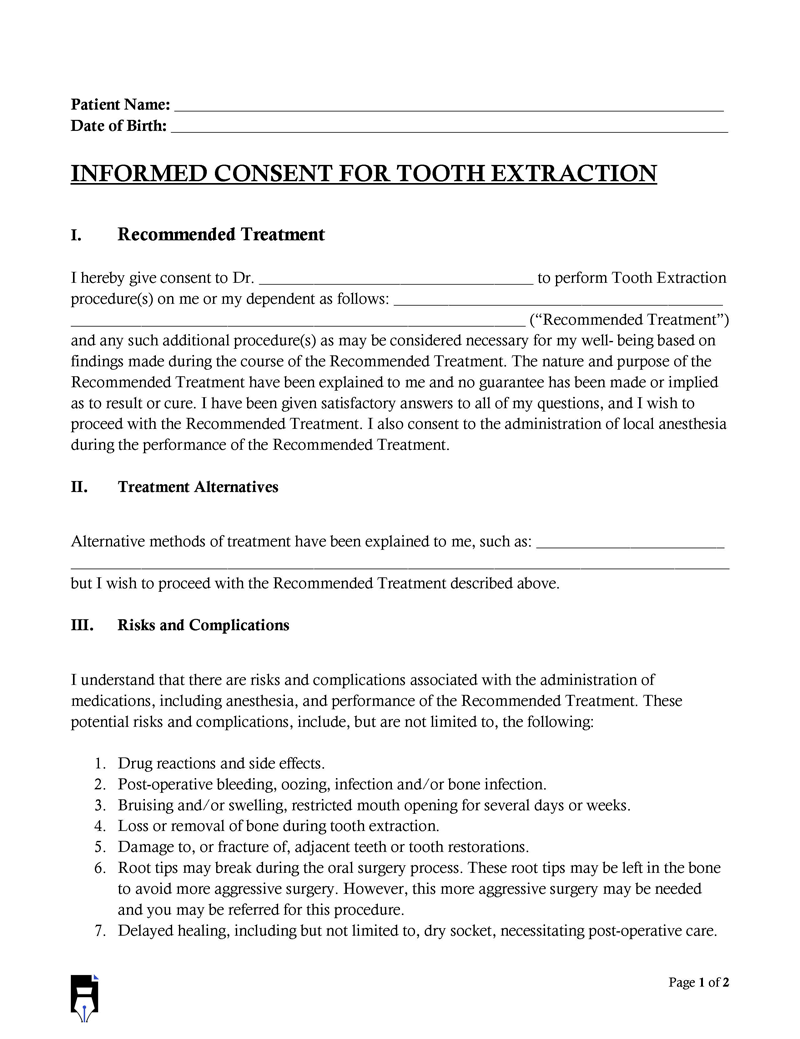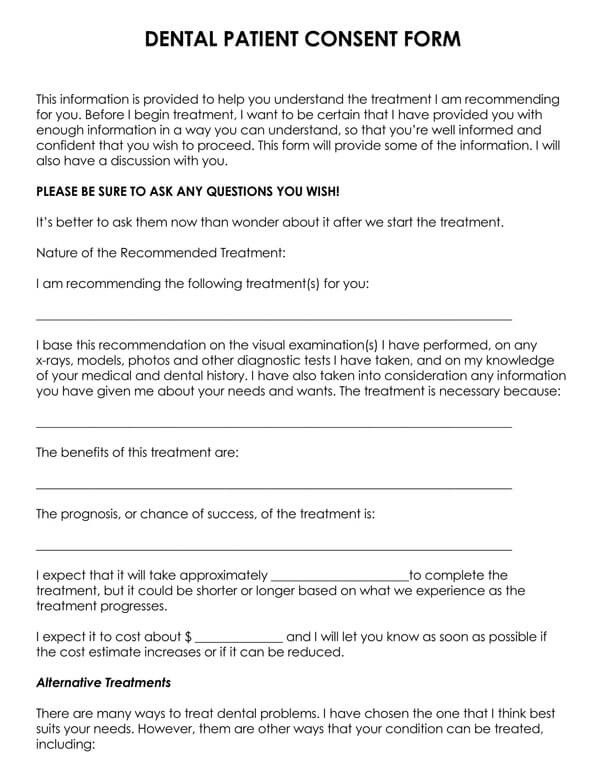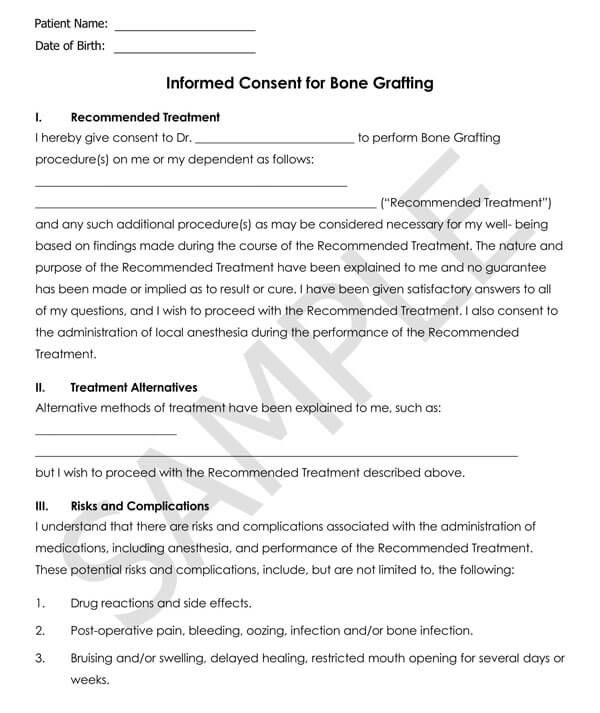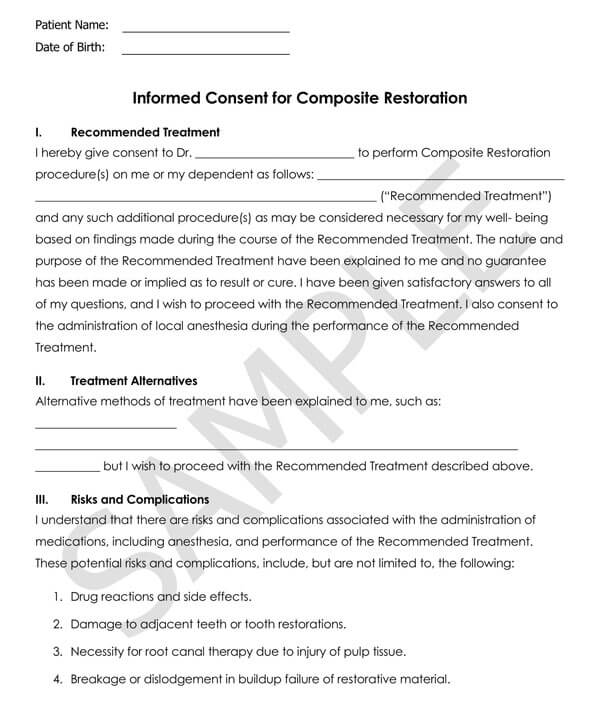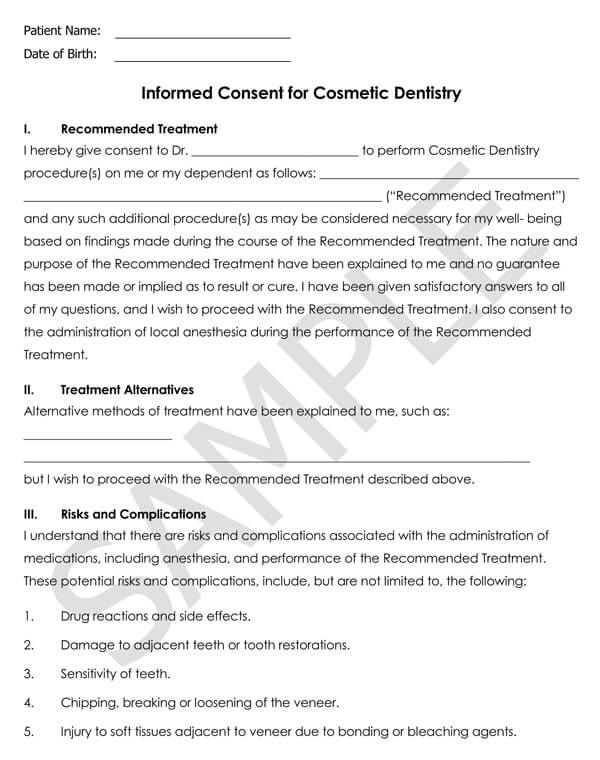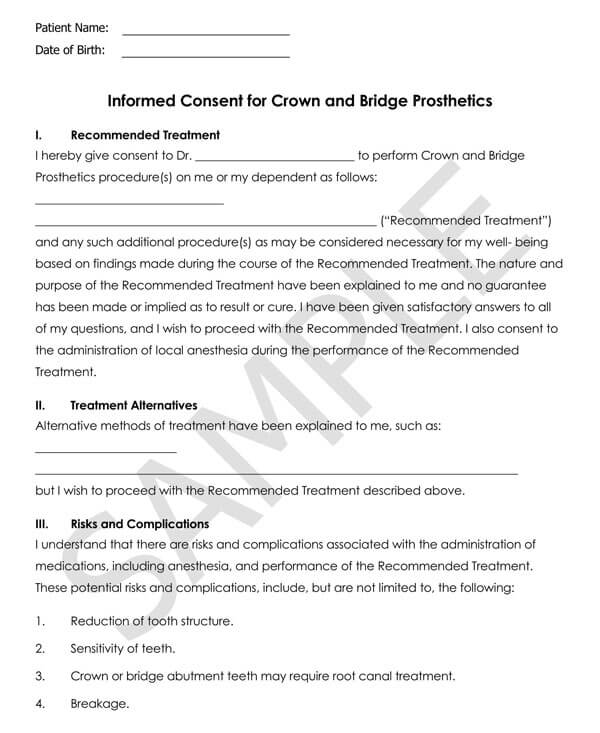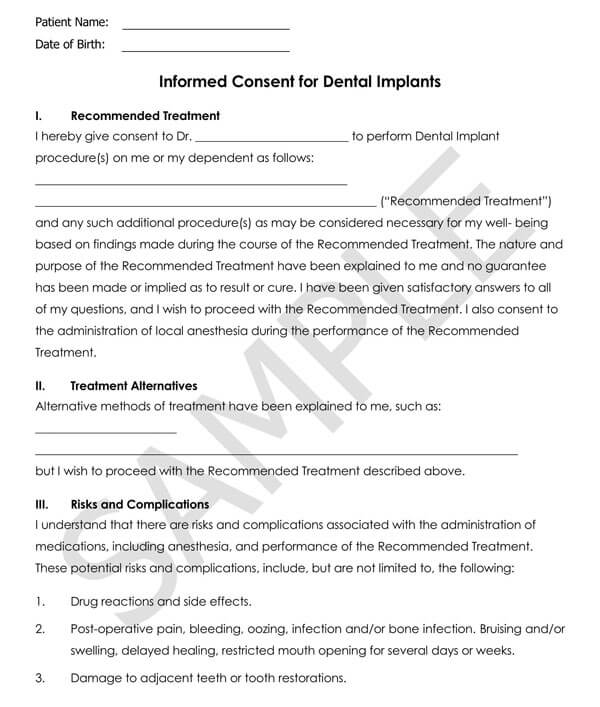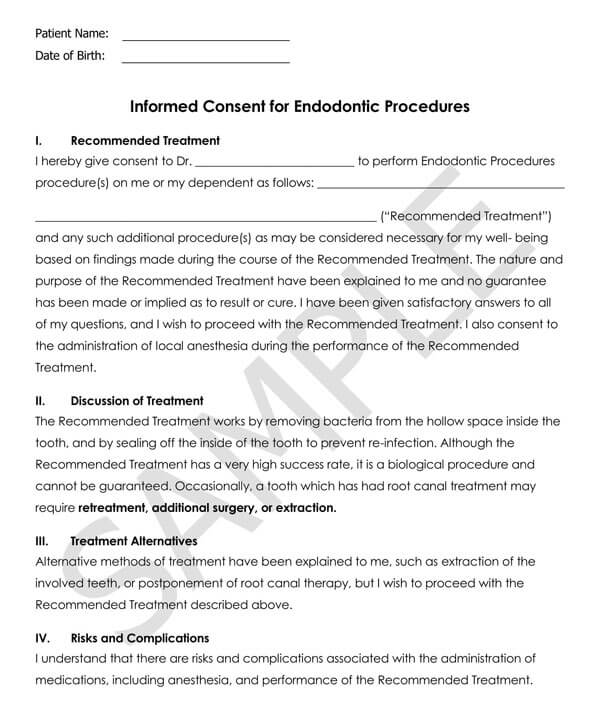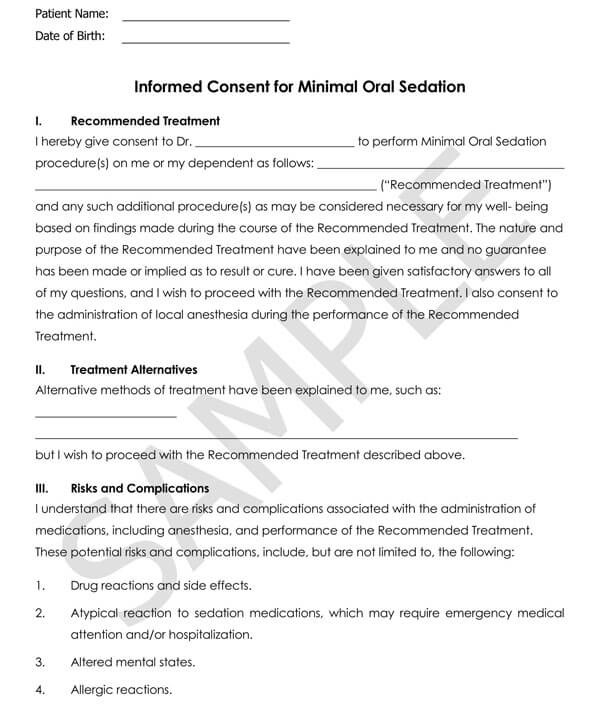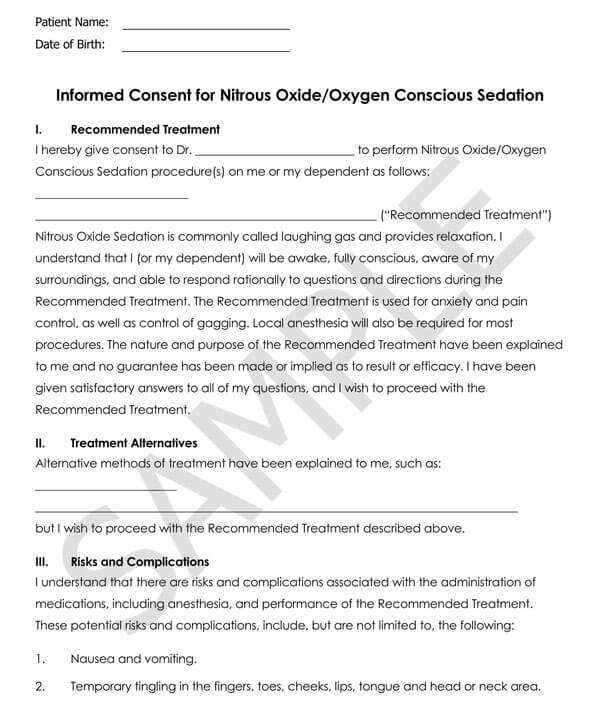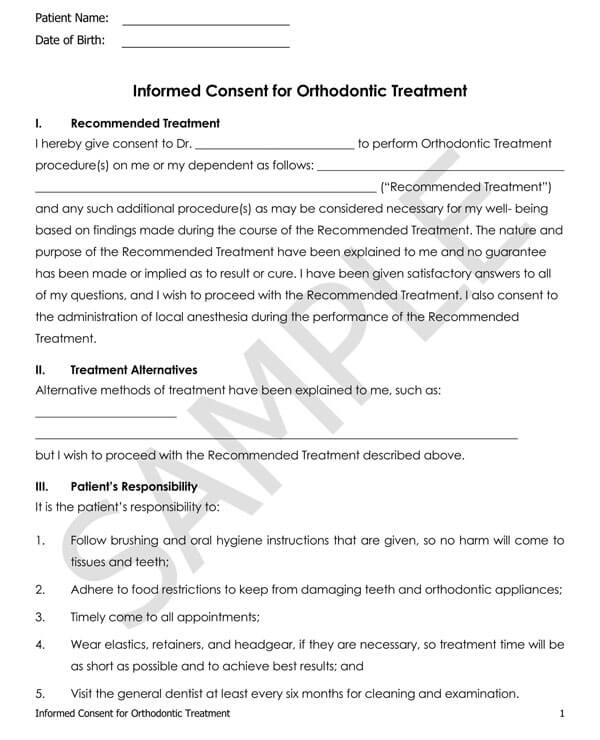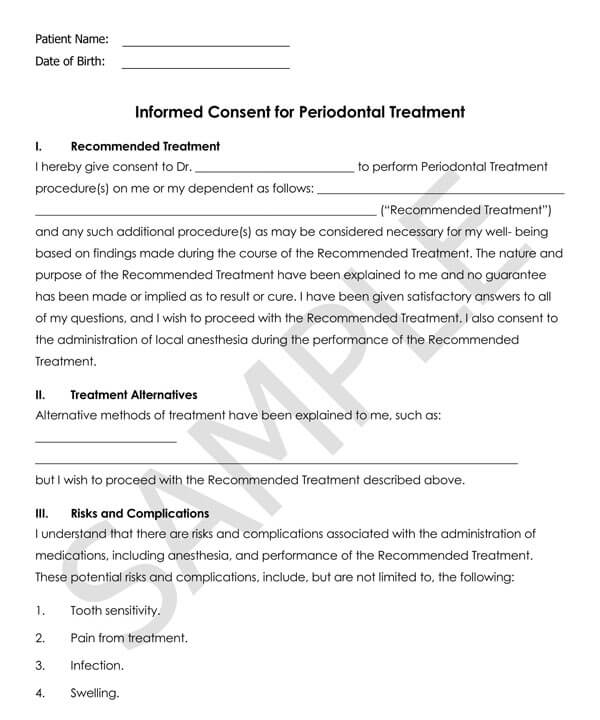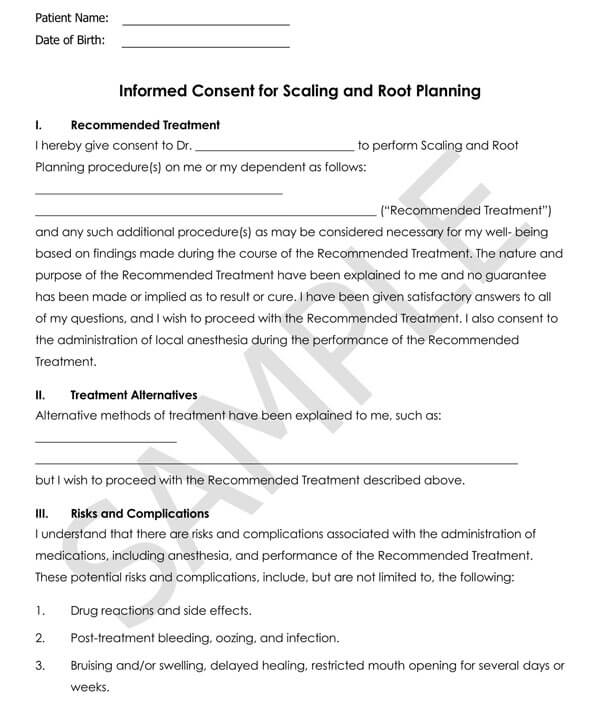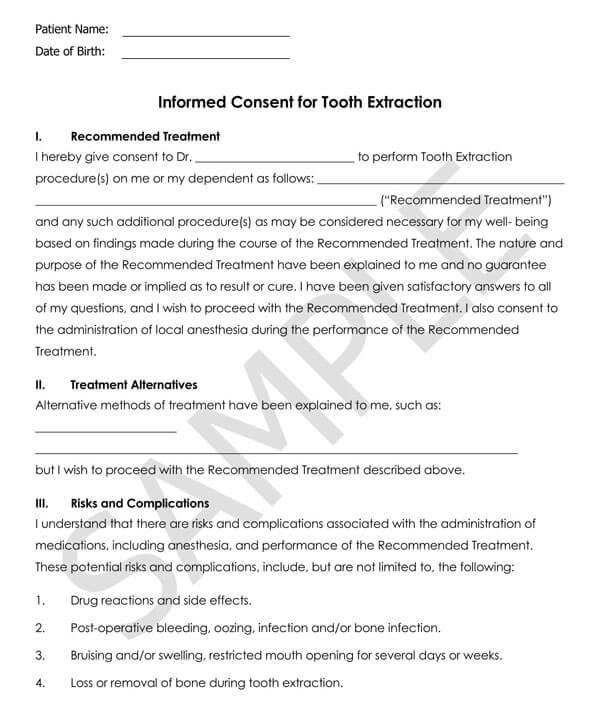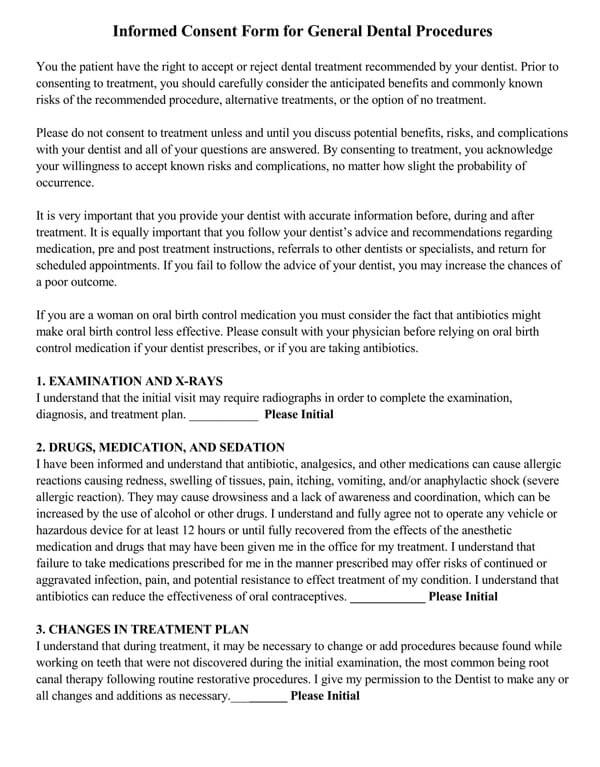Before any medical procedure is performed on a patient, a written authorization that highlights all the diagnoses, proposed interventions, and the risks associated with the proposed interventions must be duly signed – by the patient or the patient’s parent/guardian, if the patient is a minor.
That is the purpose that a dental consent form serves.
Consent is authorization from a patient—or the parent/guardian of the patient if the patient is a minor—that gives any sort of medical practitioner the go-ahead to perform specific procedures on the patient.
Reliability & Validity of Consent
For consent to be reliable, the patient/parent/guardian must first understand all the information (and its implications) on the medical procedure to be performed. Thus, the patient/parent/guardian needs to be duly informed of all details relating to the process—including the risks as well as the opportunity costs.
For the consent to be considered valid (legally binding or acceptable), the person giving the consent must first have the capacity to give consent. Minors who are, by law, underaged to understand the implications of a procedure cannot give consent; therefore, any consent obtained from them is invalid.
Also, valid consent must be given voluntarily. The patient must not be coerced, perhaps for financial considerations, into giving consent. In addition, the consent must be implied or expressly obtained by the patient or the patient’s parent/guardian.
Obtaining Consent Before Medical Procedures
There are two main types of consent forms; implied and expressed. Obtaining either one of them is necessary for medical procedures.
The two main types of consent to be obtained and their characteristics are as followed:
Implied consent
Implied consent is the consent given through the visible actions or conduct of a patient. While this may be difficult to prove, the body language of a patient can sometimes hint that a patient expresses consent for a procedure. For example, if a patient takes a sit in a ward where the process is to take place in readiness for a procedure, this could imply consent. Or when a patient rolls up his sleeves for blood to be drawn from his vein.
Implied consent is common where there is an existing relationship between the medical practitioner and the patient. Trust is a critical element in implied consent, as a history between both patient and medical practitioner gives the patient confidence in the advice of the medical practitioner.
Express Consent
Express consent is consent given verbally or in writing. Here, clinical care is not the primary aim of the diagnosis. This direct method of communication in express consent is usually employed for procedures that are complex or portends significant risks that may impact the patient’s social or personal life. In such a case, the risks must be summarized in writing besides being communicated orally for ethics and legal considerations. Express consent is also given/requested where the examination is to be used for medical research.
Now that we know that express consent can be given in writing, a Dental Patient Consent Form is a written authorization signed by a patient or the patient’s parent/guardian, if the patient is a minor or is disabled to give consent, that provides the dentist with the approval to perform specific procedures.
Why a Dental Consent Form is Important?
The dental consent form serves three purposes for the dental practitioner. They are as follows:
- It gives him/her the consent to carry on with the procedure, and it absolves him/her of any liability that may result from either the professional conduct of the medical process or non-communication of the risks of the conduct to the patient.
- On the other side, the dental consent form ensures the patient is armed with sufficient information on the benefits, costs, alternatives, and risks of the dental procedure.
- While this is not totally a substitute for a detailed conversation with the dental procedure, this form also gives the patient comfort that what has been discussed is what will be carried out in the procedure. Thus, the dental consent form is a valid document for litigation purposes—it can be used to sue a dental practitioner for damages resulting from any deviation in procedure from that initially captured in the form.
Free Dental Consent Forms
What Should be Included in Consent Form?
The following are items to include in a dental consent form:
- Highlights of any current dental problems: The status and a brief overview of the dental conditions of the patient should be outlined in the dental consent form to enable the patient to understand the severity of the illness. Hence a proper enumeration of the dental conditions is required on the form.
- An outline of any proposed dental treatments: This is also a part that is pertinent in a dental consent form. After the dental conditions have been enumerated, the proposed treatment should also follow suit to show the patient what medical process they would undergo and allow them to decide if they are willing to undergo it
- The rationales behind the proposed treatments and their expected outcomes: The reasons for the proposed treatment are necessary as this will let the patient know why certain procedures are to be taken and what might become the outcome after the procedures.
- Risks associated with the proposed treatments: If there are any risks, they would have to be stated. Most patients make their decisions based on risk and this is a very important item to be included on the form as it allows them to know what really they are getting into.
- Alternative solutions to dental problems: If there are any alternatives to what usually should be done, it should be stated as this allows the patients to make choices. For example, it can either be a full-on extraction and replacement or a tooth fill. The patient would then of their own volition make a choice.
How to Use a Dental Consent Form
During the process of the usage of a dental consent form, there are a few things that need to be taken into consideration.
These things to remember while using a dental consent form are as follows;
List details of dental related risks
As already explained above, highlighting the details of the dental risks helps to arm the patient with the sufficient information required to make an informed decision. It also helps to protect the dental practitioner from any liability that may result from the conduct of the dental procedure.
Make certain patient understands
It is not just enough for a patient to append his signature on the Dental Patient Consent Form. It is the sole job of the dental practitioner to make sure the patient understands the personal, social, and even financial implications of the procedure as well as that of all other alternatives, if any, so he/she can make an informed decision. For instance, certain patients may assume a dental procedure to be a one-off solution to their dental problem and may, therefore, not count the cost as significant.
It is essential that dental technology assesses the dental needs of the patient, vis-à-vis the patient’s financial capacity before recommending alternatives. This is why the patient-doctor discussion is as important as the signed dental consent form.
Under 18 patient needs parent to sign
Signatures must be appended on the dental consent form for the form to be legally binding. Signatures symbolize knowledge, approval, acceptance, and obligation on whatever document it is appended The signature on the dental consent form authenticates that the patient(guardian or parent in the case of a minor) has read the implications and procedures of the medical process and has accepted to go along with it. In the event of litigation, the signed documents can be presented as proof of agreement of the patient to participate in the treatment. It is necessary to ensure that the patient reads, understands, and signs the documents before carrying out any dental procedure.
Obtain signatures
Signatures must be appended on the dental consent form for the form to be legally binding. Signatures symbolize knowledge, approval, acceptance, and obligation on whatever document it is appended The signature on the dental consent form authenticates that the patient(guardian or parent in the case of a minor) has read the implications and procedures of the medical process and has accepted to go along with it. In the event of litigation, the signed documents can be presented as proof of agreement of the patient to participate in the treatment. It is necessary to ensure that the patient reads, understands, and signs the documents before carrying out any dental procedure.
Free Consent Forms & Templates
To summarize, consent is an authorization from a patient that gives the medical practitioner the go-ahead to perform specific procedures on the patient. This consent can be expressly given via direct communication (express consent) or implied via actions or conducts (implied consent). A dental consent form gives the dental practitioner and the patient comfort to carry on with a dental procedure. It details all the information about the dental procedure, including the associated risks and alternative choices.
When the consent form is armed with sufficient information to make an informed decision, the patient gives informed consent.
There are many free dental consent forms online for use. But you’ll get a concise and straightforward template that you can readily adapt to suit your own needs if you download it from here
Frequently Asked Questions
What is the age of consent for dental treatment?
In most parts of America, the age of consent is 18. However, this does not mean that a patient under 18 cannot get dental treatment—consent provided by his parent or guardian is legally acceptable for his/her dental treatment.
Can a dentist treat a minor without a parent?
The answer depends on the gravity of the dental condition. If waiting before getting consent will cause no harm to the minor, it is best to wait to obtain consent before performing the dental procedure. But in the case of an emergency, the dentist must ensure all efforts are made to reach the parents or guardians and that this is filed in the patient’s record as he/she administers treatment to the patient.
In cases where the minor comes in without a parent or guardian, but consent had been given to the dentist in prior engagement with the parent or guardian, the dentist can administer treatment to the minor.
What’s the difference between consent and informed consent?
The fundamental difference between consent and informed consent is the amount of knowledge the patient has about the consent decision. Informed consent requires that the patient understands the diagnosis and risks of the medical procedure and the alternative treatment choices (including doing nothing) and their advantages, disadvantages, and achievable outcomes.
